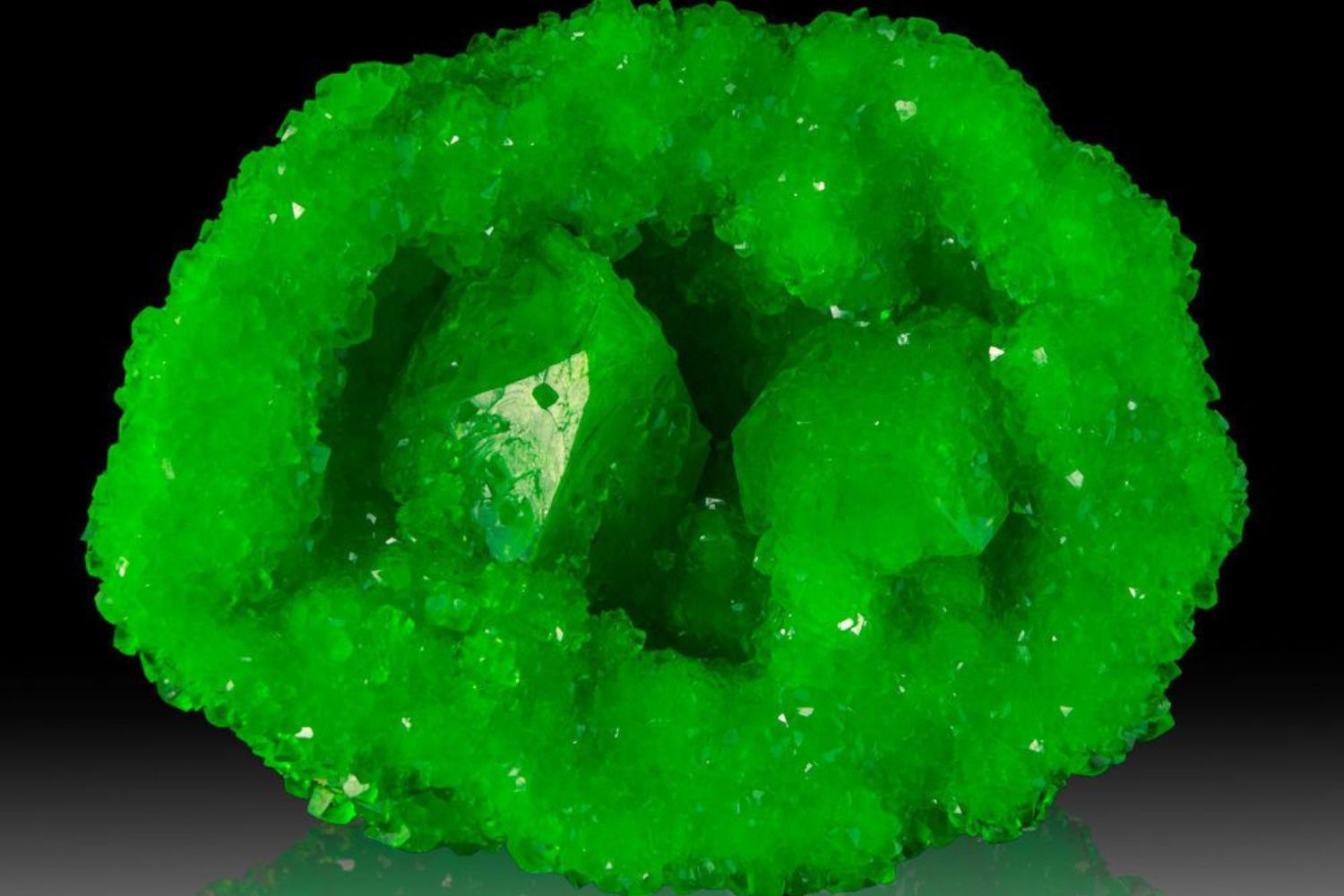
Ever heard of Boussingaultite? This intriguing mineral might not be a household name, but it holds some fascinating secrets. Named after the French chemist Jean-Baptiste Boussingault, this mineral is a sulfate that forms in volcanic environments. Boussingaultite is composed of magnesium, ammonium, and sulfate, making it quite unique. Found in places like Italy and the United States, it often appears as white or colorless crystals. Its rarity and specific formation conditions make it a subject of interest for geologists and mineral enthusiasts alike. Ready to dive into 40 captivating facts about Boussingaultite? Let's get started!
Key Takeaways:
- Boussingaultite is a rare mineral with magnesium and ammonium, used in fertilizer and chemical research. It has a unique crystal structure and can be found in Germany, USA, Chile, Russia, and Italy.
- Named after a French chemist, Boussingaultite has a bitter taste, dehydrates in air, and is a subject of scientific research for its crystal structure and formation in arid environments. It's a quirky mineral with historical significance.
What is Boussingaultite?
Boussingaultite is a rare mineral that many people might not have heard of. Named after the French chemist Jean-Baptiste Boussingault, it has some fascinating properties and uses. Let's dive into some interesting facts about this unique mineral.
- Boussingaultite is a sulfate mineral that contains magnesium and ammonium.
- It was first discovered in 1888 in the Stassfurt salt mines in Germany.
- This mineral forms in evaporite deposits, which are layers of minerals left behind after water evaporates.
- Boussingaultite is often found in association with other sulfate minerals like hexahydrite and epsomite.
- The mineral has a white to colorless appearance, making it look quite plain at first glance.
- It has a vitreous to pearly luster, giving it a shiny, glass-like appearance.
- Boussingaultite is relatively soft, with a Mohs hardness of 2.5.
- It has a specific gravity of 1.75, which means it is lighter than many other minerals.
- This mineral is soluble in water, which can make it challenging to preserve in certain environments.
- Boussingaultite forms orthorhombic crystals, which means its crystal structure is shaped like a stretched cube.
Uses and Applications
Despite its rarity, Boussingaultite has some practical applications. Here are some ways this mineral is used:
- It is used in the fertilizer industry due to its ammonium content.
- Boussingaultite can be a source of magnesium, which is essential for plant growth.
- The mineral is sometimes used in chemical research to study sulfate compounds.
- It can be used to demonstrate crystal formation in educational settings.
- Boussingaultite is also a collector's item for mineral enthusiasts due to its rarity.
Where Can You Find Boussingaultite?
Finding Boussingaultite can be quite a challenge due to its rarity. Here are some known locations where this mineral has been found:
- Stassfurt, Germany is the type locality where Boussingaultite was first discovered.
- It has also been found in the Great Salt Lake in Utah, USA.
- Chile is another country where Boussingaultite deposits have been identified.
- The mineral has been reported in Russia, particularly in the Ural Mountains.
- Italy has some known occurrences of Boussingaultite, especially in volcanic regions.
Interesting Properties
Boussingaultite has some unique properties that make it stand out among other minerals. Here are a few:
- It has a distinctive bitter taste, although tasting minerals is not recommended.
- The mineral can dehydrate when exposed to air, losing its water content.
- Boussingaultite can effloresce, meaning it can form a powdery surface coating when it dries out.
- It has a low thermal stability, decomposing at relatively low temperatures.
- The mineral can absorb moisture from the air, making it hygroscopic.
Historical Significance
Boussingaultite has an interesting history tied to its discovery and naming. Here are some historical facts:
- It was named after Jean-Baptiste Boussingault, a pioneering French chemist.
- Boussingault made significant contributions to agricultural chemistry, which is why the mineral was named in his honor.
- The discovery of Boussingaultite helped advance the understanding of sulfate minerals.
- It was one of the first minerals to be identified in the Stassfurt salt mines, which are famous for their diverse mineralogy.
- The mineral's discovery in 1888 marked an important milestone in mineralogical research.
Fun Facts
Here are some fun and quirky facts about Boussingaultite that you might find intriguing:
- It is one of the few minerals that contain both ammonium and magnesium.
- Boussingaultite can sometimes be mistaken for other white sulfate minerals due to its appearance.
- The mineral's name is quite a mouthful, often shortened to "Boussingaultite" by mineralogists.
- It is rarely used in jewelry due to its softness and solubility.
- Boussingaultite can be used to demonstrate the process of mineral dehydration in science classes.
Scientific Research
Boussingaultite continues to be a subject of scientific research. Here are some areas where it is studied:
- Researchers study its crystal structure to understand more about sulfate minerals.
- The mineral is used in geochemical studies to learn about evaporite deposits.
- Boussingaultite helps scientists understand the formation of minerals in arid environments.
- It is used in experimental petrology to study mineral stability under different conditions.
- The mineral's unique properties make it a subject of interest in mineralogical research.
The Final Word on Boussingaultite
Boussingaultite, a rare mineral, offers a fascinating glimpse into the world of geology. Found in volcanic areas, it consists of magnesium, ammonium, and sulfate. Its unique crystalline structure makes it a subject of interest for scientists and collectors alike. Despite its rarity, boussingaultite has practical applications in agriculture and industry, particularly in fertilizers due to its ammonium content.
Understanding boussingaultite helps us appreciate the complexity and diversity of Earth's minerals. Whether you're a geology enthusiast or just curious about the natural world, learning about such minerals broadens your knowledge and sparks curiosity. So next time you hear about boussingaultite, you'll know it's more than just a tongue-twister; it's a window into the intricate processes that shape our planet. Keep exploring, and who knows what other hidden gems you'll uncover!
Frequently Asked Questions
Was this page helpful?
Our commitment to delivering trustworthy and engaging content is at the heart of what we do. Each fact on our site is contributed by real users like you, bringing a wealth of diverse insights and information. To ensure the highest standards of accuracy and reliability, our dedicated editors meticulously review each submission. This process guarantees that the facts we share are not only fascinating but also credible. Trust in our commitment to quality and authenticity as you explore and learn with us.


